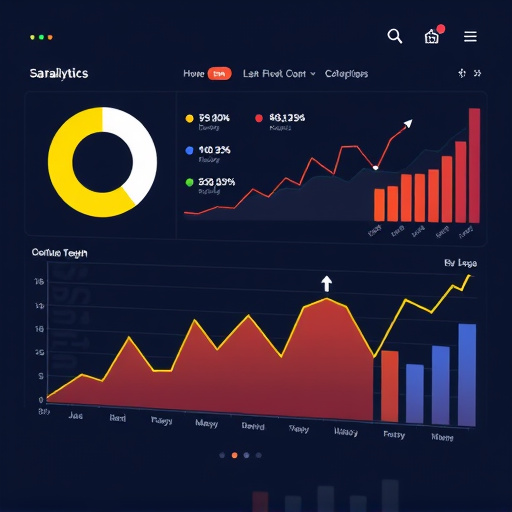The rise of voice search technology has prompted a significant shift in local SEO strategies, as users increasingly rely on natural language queries via smartphones and smart speakers. Local businesses must optimize their content for conversational, long-tail voice searches targeting specific needs and questions, rather than just keywords. "Local SEO services" play a crucial role in integrating brands into voice search results, capturing the growing number of users turning to this convenient method for local information and services, particularly in regions like Broward and Hollywood, FL. Optimizing websites for both voice and text searches is essential, with mobile-friendly designs that understand user queries through natural language processing (NLP). Businesses should adapt their organic SEO services to prioritize content that aligns with user intent and leverage local keywords for geographic targeting.
In the rapidly evolving digital landscape, voice search is transforming how users interact with information. As virtual assistants like Siri and Google become ubiquitous, understanding and optimizing for this trend has become crucial for local SEO services. This article delves into the rise of voice search, exploring its impact on user behavior and offering practical strategies. We’ll discuss technical considerations, from website structure to structured data, and present compelling case studies showcasing how local businesses are leveraging voice technology to boost their visibility and attract more customers.
- The Rise of Voice Search: Shaping Local SEO Strategies
- – Understanding the shift towards voice search
- – How users interact with voice assistants differently than web search
The Rise of Voice Search: Shaping Local SEO Strategies

The rise of voice search technology has significantly impacted how people interact with digital assistants and search engines, leading to a paradigm shift in local SEO strategies. With devices like smartphones and smart speakers becoming ubiquitous, users are increasingly relying on natural language queries to find information quickly. This change in user behavior demands that local businesses adapt their marketing approaches.
Optimizing for voice search involves rethinking keyword usage and content creation. Unlike traditional text-based searches, voice queries tend to be longer, more conversational, and focused on specific needs or questions. For example, instead of typing “pizza restaurants near me,” a user might ask, “What are the best pizza places I can order from in Fort Worth?” This shift necessitates that local SEO services not only target relevant keywords but also craft content that addresses these long-tail queries effectively. Additionally, with digital marketing becoming more localized and targeted, businesses in Broward and other regions should focus on integrating their brands into voice search results to capture the growing number of users turning to this convenient method for local information and services.
– Understanding the shift towards voice search

The rise of voice assistants like Siri, Alexa, and Google Assistant has significantly shifted the way people interact with technology. With the convenience of hands-free search, users are increasingly relying on voice commands to find information, make purchases, and access services. This shift presents a profound opportunity for local businesses looking to enhance their visibility and attract customers through local SEO services. As more people adopt mobile devices as their primary means of searching, optimizing for both voice and text searches becomes crucial for any successful website design agency.
The integration of natural language processing (NLP) into search algorithms further emphasizes the need for mobile-friendly website design that understands and interprets user queries. Traditional keyword-heavy SEO strategies may not be as effective in this new landscape, where the focus is on providing accurate, relevant, and concise answers to voice search queries. Businesses should adapt their organic SEO services to cater to these changes by creating content that addresses user intent, ensuring their websites are optimized for both visual and voice searches, and leveraging local keywords to target specific geographic areas.
– How users interact with voice assistants differently than web search

Voice assistants have changed the way users interact with technology, introducing a more conversational and natural approach to searching. When using voice assistants like Siri or Alexa, individuals tend to speak queries aloud, often in a relaxed and casual manner, as if conversing with a friend. This differs significantly from traditional web search behavior, where users typically type precise keywords with specific intentions. In local SEO services, understanding this shift is crucial. For instance, a user might say, “Where’s the nearest Italian restaurant?” instead of meticulously crafting a query like “best Italian restaurants near me.”
This new interaction pattern has implications for local business listings and website design in Hollywood FL. With responsive web design playing a vital role, businesses need to optimize their online presence to accommodate voice search trends. By integrating relevant keywords naturally into content and ensuring mobile-friendly interfaces, local SEO services can help boost local search visibility. This strategy recognizes that voice assistants are becoming an integral part of daily routines, revolutionizing how users discover and connect with nearby establishments.
As voice search continues to dominate, integrating this trend into local SEO strategies is no longer an option but a necessity. The unique interaction patterns users have with voice assistants demand a shift in how we optimize content for local queries. By focusing on natural language processing and context-aware signals, businesses can enhance their visibility and provide relevant, localized results to voice search users. Embracing these trends ensures that local SEO services stay ahead of the curve and better serve customers in today’s digital age.














